In a free-flowing conversation curated by the Pew-Knight Initiative for 2025 iMEdD International Journalism Forum, four journalists discuss how the transfer of power from traditional media gatekeepers to the general public is playing out.
Photos: Alex Grymanis, Christos Karagiorgakis
“Navigating the Age of Doubt”: Journalists Debate Survival, Trust and the Future of their Mission
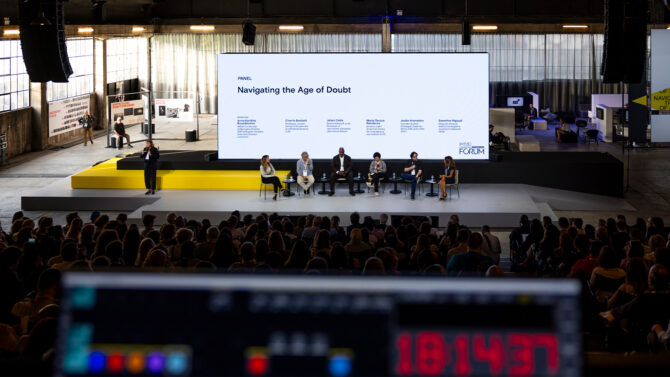
The opening panel of the iMEdD International Journalism Forum 2025 highlighted a profession in flux, balancing threats and opportunities, technology and human values, skepticism and public service.
Each year, more people are getting their news through non-traditional news sources. And as the sources become more diffuse, so does the content. The question of how people get their news, what they consider to be news and who do they turn to get it was the focus of both a new study published by the Pew Research Center on September 25 and the panel “In a changing information environment, what is “news” and who gets to decide?” at this year’s iMEdD International Journalism Forum.
To kick off the discussion, the Pew Center’s senior researcher Kirsten Eddy, presented the data, which found that half of US users of TikTok, Facebook and X regularly get their news from those platforms, while just under half of all Americans say their news comes from people they consider to be journalists. 37 percent of 18 to 29-year-olds get informed from news influencers on social media.
At the same time, more than 80 percent of responders said honesty, intelligence and authenticity were the values they looked for in their news sources.
For legacy media organizations, these trends have sparked both alarm and ‘self-flagellation,’ as Semafor’s Max Tani put it during the panel. But he argues that journalists often are too hard on themselves. “The fact is that we now have to compete with people who could be watching Netflix on their phone,” said the co-host of the podcast Mixed Signals. Tani acknowledged that the shift in news habits and consumption has had financial as well as influential repercussions. But he also saw an opportunity for news organizations. “People still obviously have a tremendous desire for news and information. They’re just open to receiving it in different ways.”
In fact, when asked, an overwhelming majority of respondents considered updates on elections, the war in Gaza, motor vehicle accidents and notable achievements by community members as news —content quite similar to what any newscast or newspaper might contain.
So then why have audiences plummeted? The panelists offered two reasons.
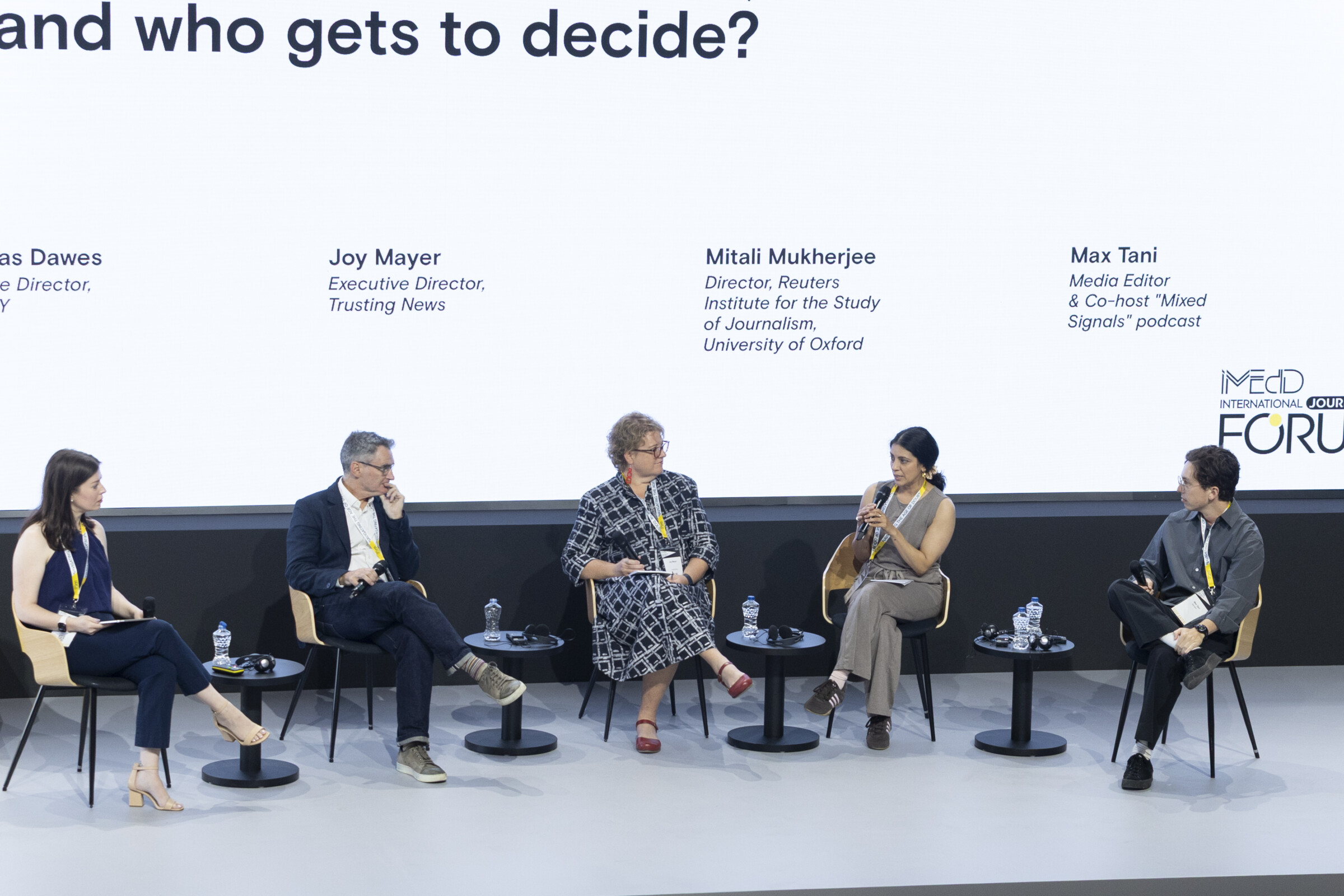
For Gen Z, media = social media
Mitali Mukherjee, the director of the Reuters Institute for the Study of Journalism at the University of Oxford, said that for younger audiences, even the word ‘media’ means something else.
“For us, media tended to mean mainstream media and news organizations, but I think instantly the moment you would talk to young audiences, if you said the word ‘media,’ they’d be thinking of social media platforms first and then sort of traditional news outlets,” said Mukherjee.
What has changed, she said, is the gateway; it’s how people are getting to the news, not a lesser desire for information.
“More and more, the audiences that we survey, and this is across close to 50 countries, say they do not have the habit of sort of going direct to a news website. They’re coming across this on their social media feed, and that’s where they’re tapping or clicking to explore it further.”
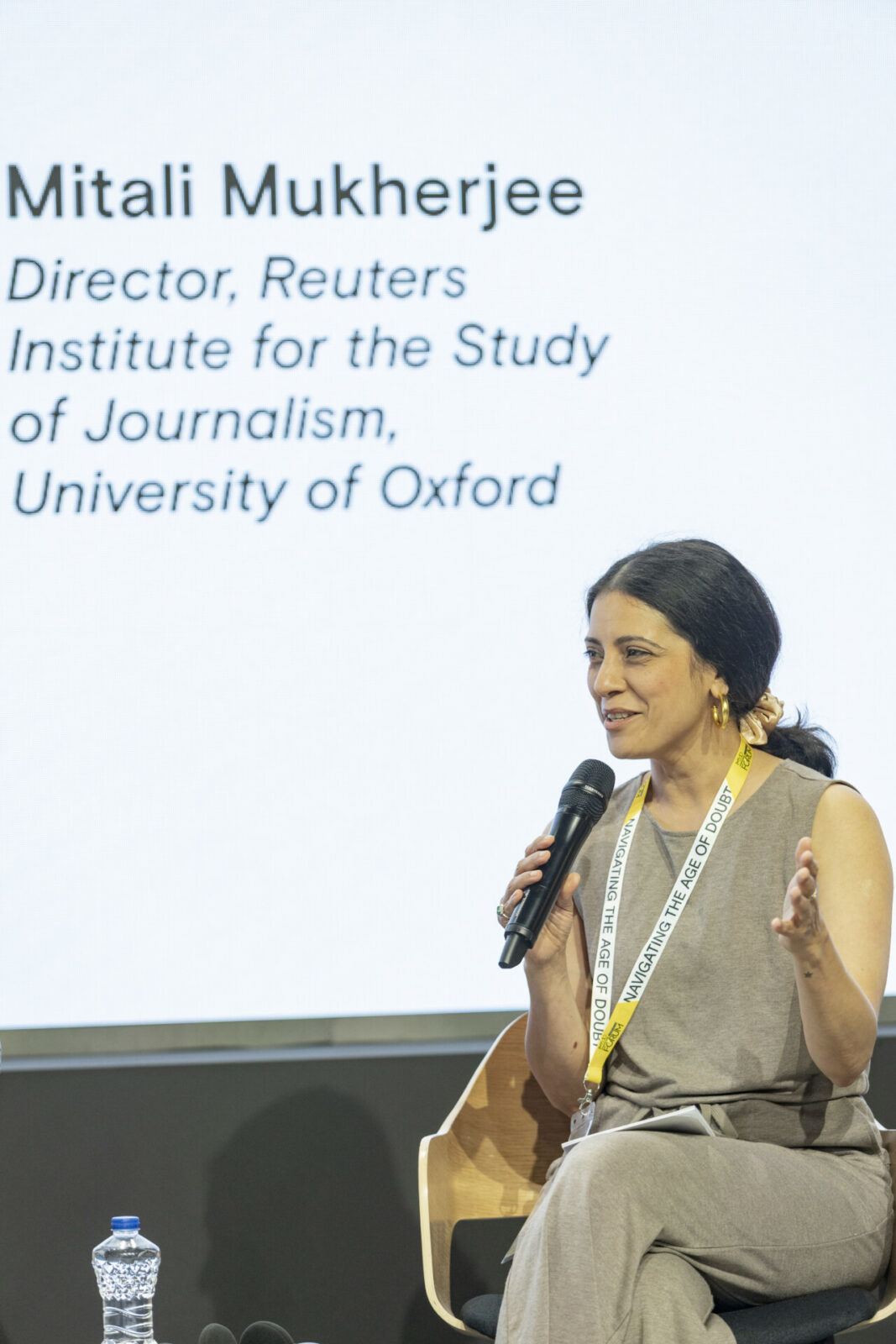
Media tended to mean mainstream media and news organizations, but instantly the moment you would talk to young audiences, if you said the word ‘media,’ they’d be thinking of social media platforms first.
Mitali Mukherjee, Director of the Reuters Institute for the Study of Journalism
Social media also means that audiences can go straight to the source by clicking through to the handle of a sports star or politician and see directly what they are posting without having to wait to get it second hand from a journalist.
“They now have this access that they believe is absolutely direct, which is: let me go to their handle, let me go to their YouTube site, let me hear what they have to say on Instagram, and that is kind of building a direct connection,” said Mukherjee.
This poses a specific challenge for journalists, said Tani, who now must compete with news influencers who don’t hold themselves to the editorial standards of a newsroom.
“I can be fired if I say something wrong; a news influencer a lot of times, says whoops, or you don’t have to say anything at all and you can kind of just kind of continue on your way,” he said. “They might not have the same kind of ethical boundaries when it comes to advertising or things like that. But also, we’ve seen that the public is interested in connecting with individuals,” he said.
I can be fired if I say something wrong; a news influencer a lot of times, says whoops, or you don’t have to say anything at all and you can kind of just kind of continue on your way.
Max Tani, Media Editor & Co-host of the podcast “Mixed Signals”
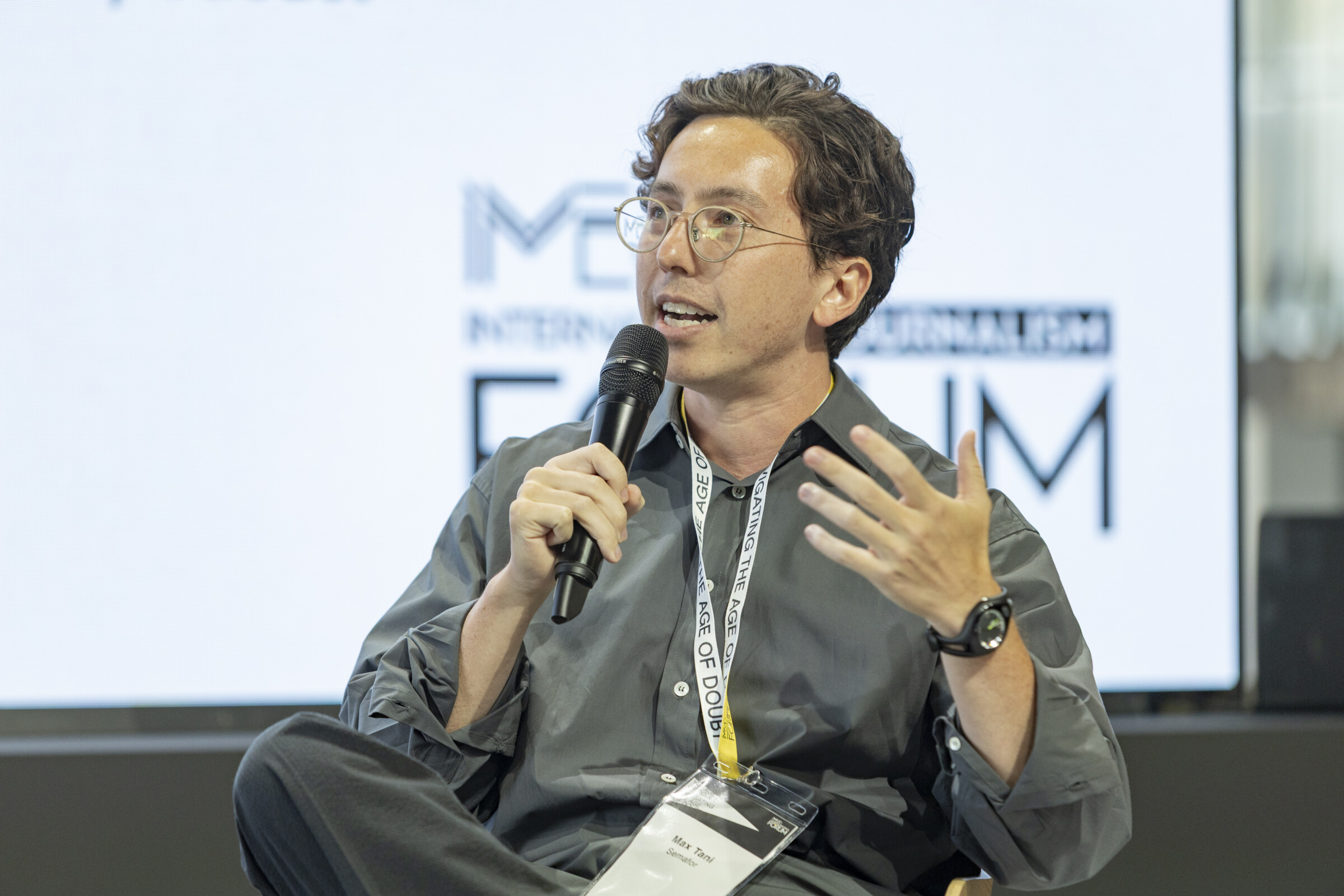
A need for “deep curiosity”
Years ago, those individuals were the television news presenters that people tuned into at the same time and on the same few channels. Now the question journalists are grappling with is why do audiences prefer and even trust alternative sources of news more than them?
“There is an assumption that news organizations are squelching the truth or lying on purpose,” said Joy Mayer, the executive director of the nonprofit Trusting News. “We need to have so much curiosity about how people are deciding what is honest —and what is getting in the way of them seeing me as honest.”
Mayer said that media organizations should constantly be asking themselves whether what they offer is useful and accessible to the audiences they have, not the ones they wish they had.
“If the investigation or the service journalism you’re doing is to be valued, people need to trust your mission. They need to trust the process by which you gather information. How do you know what you know? How are you fact checking? What is it that you would like people to know about your information?”
Nic Dawes, the executive editor of The City, an independent nonprofit serving the people of New York said that his organization follows the dual pillars of investigative journalism and service journalism to give New Yorkers information they need by building more direct forms of engagement, and meeting with readers IRL.
“To meet people where they’re at is not only to show up in their social feed or their search dialog. It’s not only to live on large platforms controlled by massive tech companies. It’s also to show up in a community center or at a park or an event. It’s to be available to answer questions,” he said.
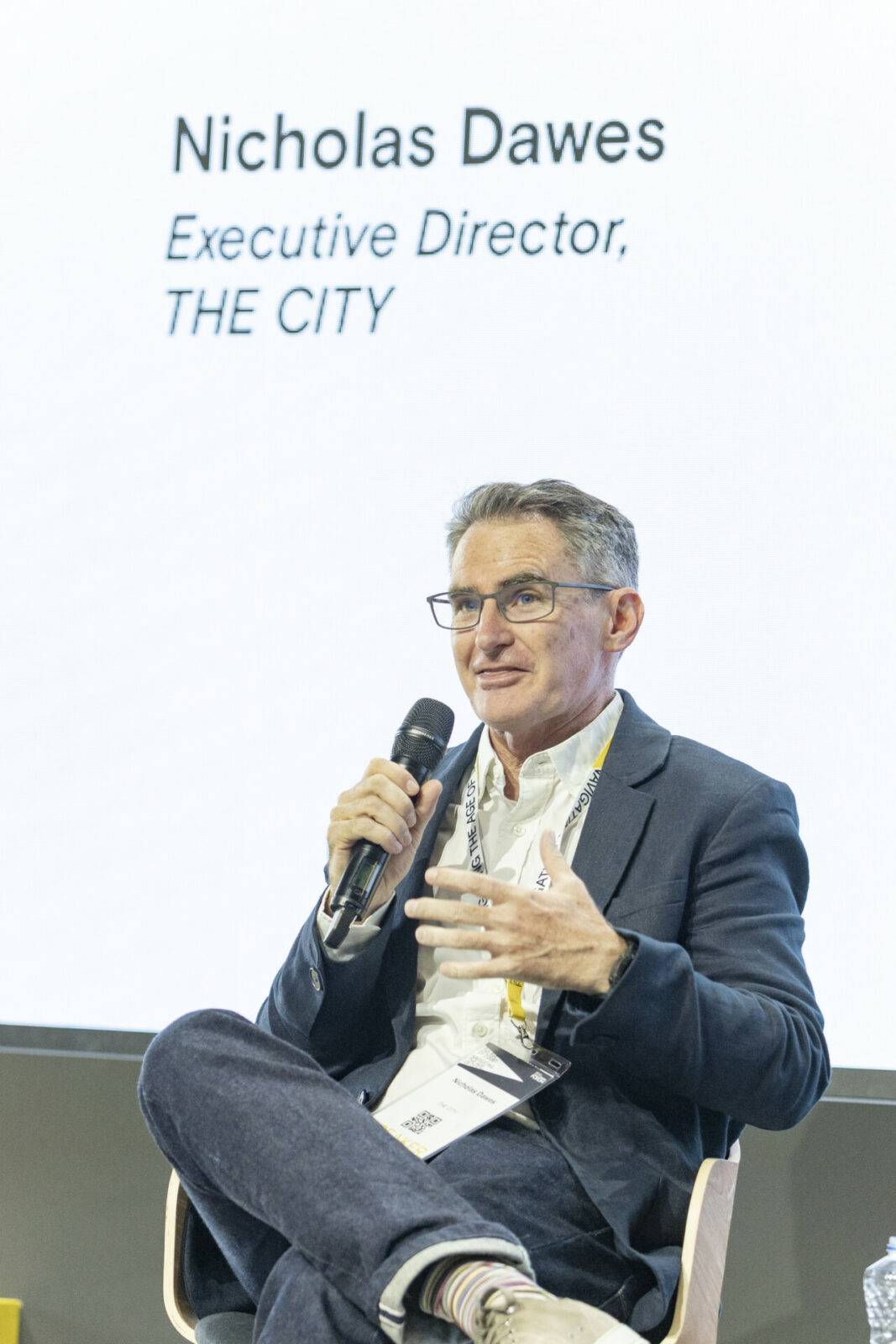
To meet people where they’re at is not only to show up in their social feed or their search dialog […] It’s also to show up in a community center or at a park or an event.
Nic Dawes, Executive Editor of The City
In that way, Dawes says, people can connect The City’s accountability reporting with their service journalism.
“The theory of the case we have is that if we show up in a way that’s actively helpful to you – and that could be how do I get my landlord to turn on the heat in my apartment? Or where should I go to vote? – then when we show with an investigative story that, for example, looks at Eric Adams, our mayor’s fundraising and ultimately triggers an FBI investigation, the matrix of our relationship is different and you’re able to feel differently about us and our relationship with you,” said Dawes.
That actually did happen over the summer, when a former aide to Mayor Adams passed 300 dollars in a bag of potato chips to a reporter from The City during a campaign event, in an apparent attempted bribe. The story made news all over the world.
Dawes said that rigorous fact-finding, ethical approaches to right of reply and a willingness to engage directly with communities are the key components creating a relationship with the audience.
“Newsfluencers” are not the enemy
And one groundbreaking way that Dawes said The City did in fact reach a bigger audience —and could possibly unlock an innovative path forward to greater distribution and relevance— was partnering with local news influencers. Dawes said it happened almost by accident.
“We had a completely banal piece this April about changes to the rules which was picked up by two TikTokers whom we haven’t had no contact with whatsoever. That piece did about 250,000 unique views in one afternoon. But the compelling thing about it, it wasn’t just drive-by traffic. A thousand people signed up for our newsletter in the course of that afternoon,” said Dawes. And what was significant was that both the creators and The City experienced significant reach beyond their usual audiences. Since then, The City has experimented more with partnerships with news influencers, and said that ideally he’d like to actively build out a program that fosters these relationships to reach the social media audiences that have abandoned news websites.
Mukherjee mentioned a study done in the UK during Covid, where the results showed that young people were not engaging with the news because it was affecting their mental health and that they didn’t feel that their life experiences were being accurately represented.
“People need agency,” stressed Mukherjee. “When they turn to the news, they don’t want to know how bad it is because it is bad. And, you know, if I were to do a show of hands, I think all of us actually have a news avoidance habit. There are days we don’t check the news. There are certain topics that really overwhelm us because they upset us. So what we need to do is provide people with more agency along with value.”
Watch the full panel discussion here

